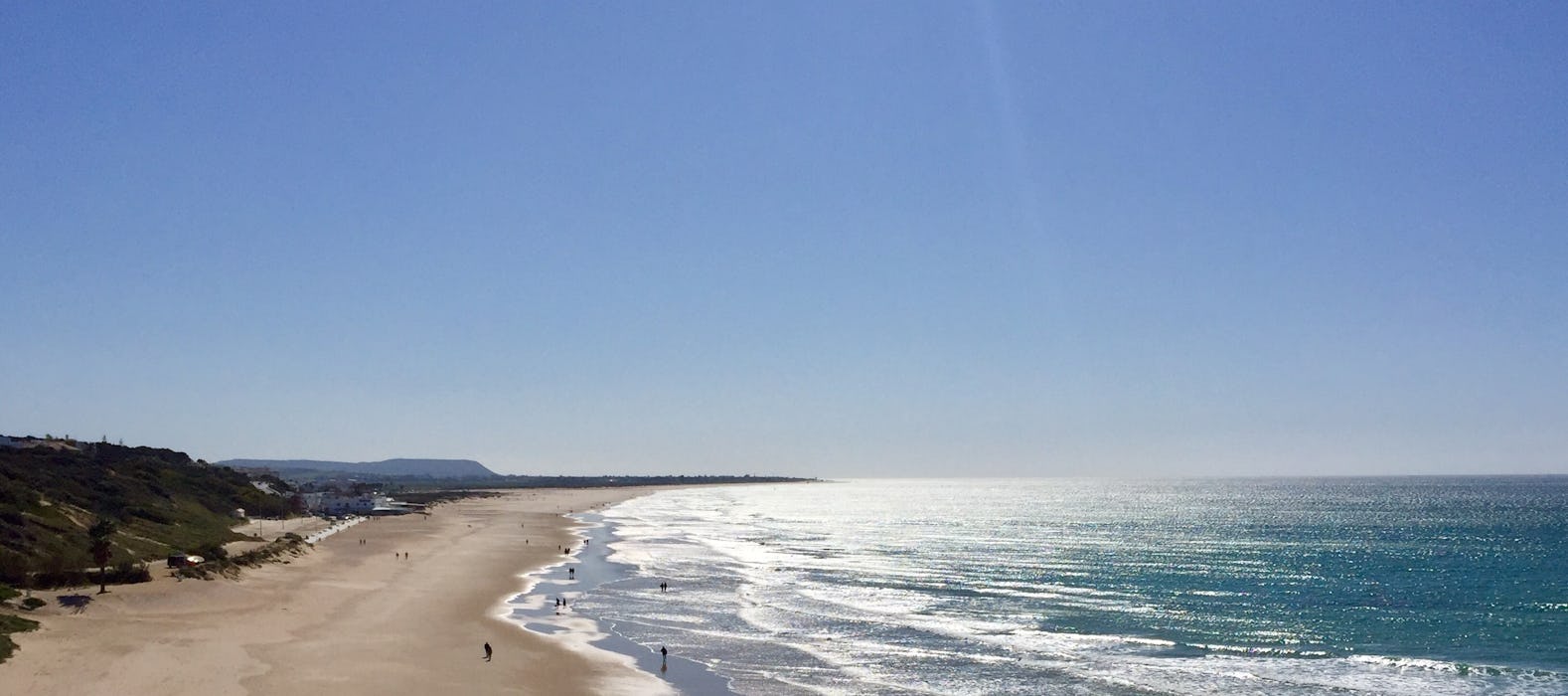Let us help you plan the perfect sailing trip
Provide your travel details, receive free offer and enjoy your holiday!
When it comes to regions of Spain, Andalusia is one of those places that is quintessentially Spanish: stunning architectural feats, impressive natural surroundings and an unforgettable cultural and culinary scene await you here.
Occupying the south of the Iberian peninsula, Andalusia is the only European region with both Mediterranean and Atlantic coastlines, offering an abundance of sunshine and warm temperatures.
Andalusia is the land of culture, history, and fiestas where one can visit everything from outstanding monuments to various natural landscapes. As the sun sets, everyone is welcome to the vibrant Andalusian nightlife, where sampling delicious local cuisine is the thing to do.
Exploring the interior of this sun-kissed region, you will be met with the Andalusian steppes, an arid region in the southeastern corner of Andalusia, near the provinces of Granada and Almería.
The Costa del Sol extends from east to west from the city of Málaga along the Mediterranean coast and is one of Spain's most popular rivieras and the ideal summer destination.
At the eastern end of the Strait of Gibraltar, Gibraltar, the small British overseas territory, shares a small land border with the province of Cadiz.
What not to miss when visiting Andalusia
The best way to discover the culture of Andalusia is by exploring the sites which have been awarded the UNESCO World Heritage designation.
In Granada, you'll see the Alhambra palace, the Generalife gardens and the mediaeval Albaicín neighbourhood.
Cordoba houses a historic centre with the great Mosque, while the regional capital of Seville is famous for its cathedral, the Alcázar palace and the Indies Archive.
Andalusia has many different, primarily religious festivals: Easter Week, the Carnival in Cadiz, the Rocío pilgrimage in Huelva and the April Fair in Seville are just some of the most popular ones.

Seville
Seville is one of those remarkable Spanish cities that encapsulates the beauty of its colourful past. A city with a unique atmosphere, Seville leaves a lasting impression on everyone that visits here. Grandiose monuments and palaces, hospitable locals and an exciting nightlife - these are just some of the many things that make the capital of Andalusia so appealing.
Seville offers constant reminders of the mesh of cultures that happened here in the past.
None more evident than the Seville Cathedral and its bell tower of La Giralda:
Built as the minaret for the Great Mosque of Seville in the 12th century, it was later decorated with a Renaissance-style top and repurposed by the Catholics. This 104-metre tall tower offers spectacular views of Seville.
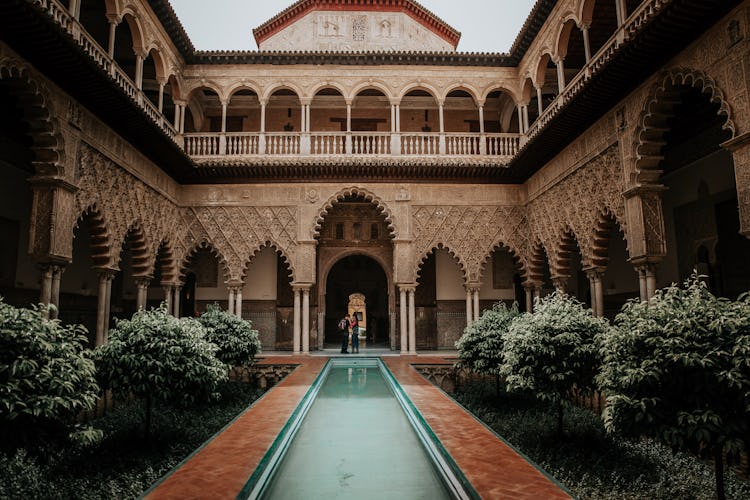
Another testament to Seville's colourful past is the Alcazar of Seville. The royal palace was built for the Christian king Peter of Castile on top of an Abbadid Muslim alcazar (residential fortress). This extraordinary palace, decorated with stunning details and breathtaking mosaics, is still occasionally used as a Spanish royal family's residence.
Completing the trio of Seville's most prominent landmarks, all included on the UNESCO World Heritage Site list, is the General Archive of the Indies: Standing as a testament to the wealthiest period of Spain's history - the colonization era. Housed in the merchants' exchange of Seville (Casa Lonja de Mercaderes), this is the repository of valuable documents illustrating the history of the Spanish Empire as they expanded into the Americas and Southeast Asia. The building itself is a prime example of Spanish Renaissance architecture, displaying stunning facade details and an impressive courtyard.
Granada
Granada is yet another historic city in Andalusia, located at the Sierra Nevada mountains' foothills, where four rivers intertwine. The city's location presents a unique opportunity: here, you can go skiing in the Sierra Nevada and swimming in the nearby Costa Tropical, all on the same day! Both destinations are about an hour drive away, making Granada a true all-purpose vacation destination.
The Sierra Nevada ski resort is the southernmost ski resort in Europe and is well known for having the longest-lasting skiing season in Spain. Each year, there is even a 'Skiing in Swimming Suit Day', held at the end of the ski season.
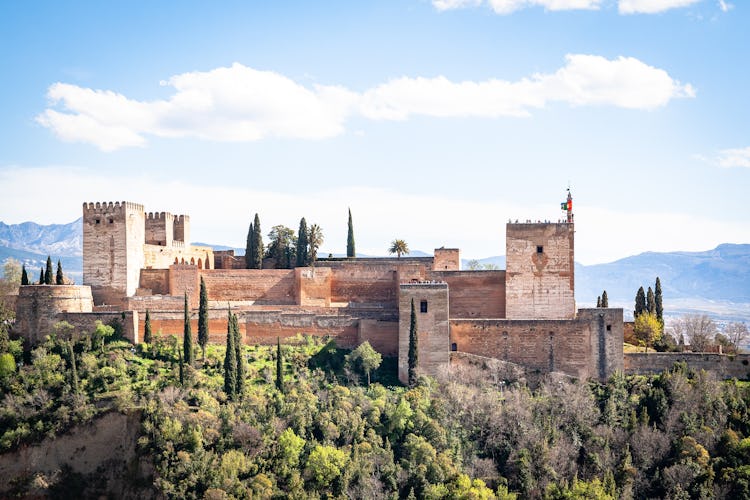
However, Granda is most famous for the Alhambra, an ancient Nasrid citadel and palace that attracts over 3 million visitors every year. The palace was originally a tiny fortress constructed in the 9th century that was extensively expanded and upgraded in the 13th and 14th century. This intriguing landmark is the only one of its kind in the world - both a palace and a fortress. Almost every inch of Alhambra is covered with stunning displays of Islamic architecture with unparalleled attention to details, displaying wonderful mosaics everywhere.
Cordoba
Cordoba is the third-largest Andalusian city, situated northeast of the regional capital of Seville. Home to stunning examples of Moorish architecture such as The Mezquita Catedral, which was declared a UNESCO World Heritage Site in 1984. Since then, UNESCO World Heritage Site status has been given to the whole historic centre of Córdoba, Medina Azahara palace ruins and Festival de los Patios courtyards. Cordoba has four World Heritage Sites in total, more than anywhere else in the world.
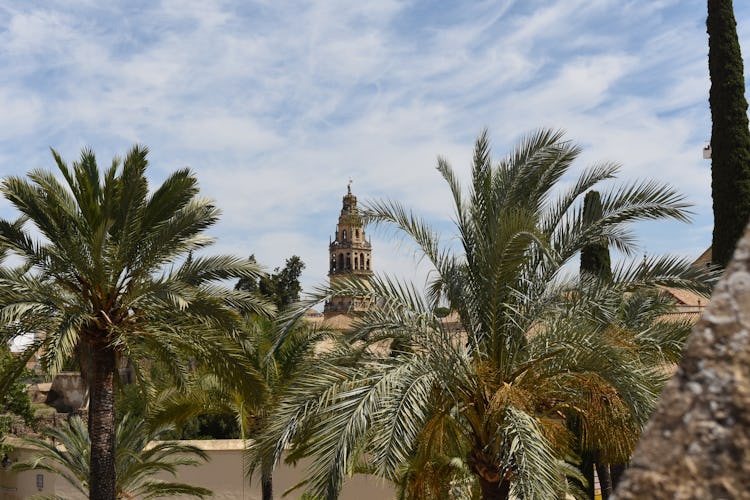
Cadiz
One of the oldest continuously inhabited cities in Western Europe, Cadiz nurtures a history that spans more than 3000 years.
Situated on the Atlantic ocean, occupying a narrow stretch of land surrounded by the sea, Cádiz has been the principal homeport of the Spanish Navy since the 18th century.
Today, Cadiz houses one of the most prestigious schools in Spain - the University of Cádiz.
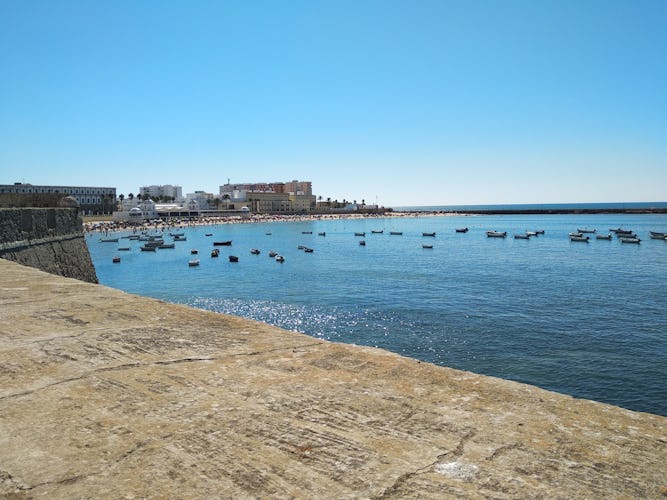
A typical Andalusian city, Cadiz is visually attractive, with an abundance of beautiful vistas and well-preserved historical landmarks. The older part of Cadiz, commonly referred to as the Old Town, is bordered within the old city walls' remnants.
The city is also dotted with luscious parks where you will find exotic plants, including trees that were supposedly brought to Spain by Christopher Columbus from the New World.
Malaga
Málaga is the second-most populous city in Andalusia after Seville and the sixth most populous in Spain. The city is situated on the Costa del Sol (Coast of the Sun) on the Mediterranean shore, about 100 kilometres east of the Strait of Gibraltar.

Like Cadiz, Málaga's history spans nearly 2,800 years, founded by the Phoenicians as the city of Malaka. Archaeological remains and landmarks reveal that the city was under the influence of the Phoenicians, Romans, Arabs and Christians in the past. This vast influence transformed the city's historical centre into a museum in the open, where one can explore landmarks from the city's previous rulers.
World-renowned painter and sculptor Pablo Picasso was born in Malaga, and here you can visit the museum dedicated to this genius artist, housing nearly 300 of his works.
Malaga is a bustling city, acting as an important commercial and tourist hub for the region. The city also houses the Andalusia Technology Park (PTA), one of the most important economic centres in the south of Spain, housing over 600 different companies.
Andalusian beaches
Andalusia offers more than 800 kilometres of coastline, mostly consisting of spectacular beaches with white sands and crystal clear turquoise waters. Whether you're seeking secluded coves, family-friendly and accessible beaches or waterparks offering high-adrenaline watersports, Andalusia offers something for everyone. Andalusia is also one of Europe's hottest regions, meaning plenty of sunshine and fair weather for the majority of the year.
Torremolinos
Torremolinos, Costa del Sol's first-ever resort, is located just 13 kilometres north of Malaga. Here you will find a long, straight stretch of coast lined with rows of sunbeds and umbrellas, surrounded by hotels and apartments. There are plenty of beach bars, restaurants and nightclubs, creating a typical and busy nightlife, providing entertainment long into the night.
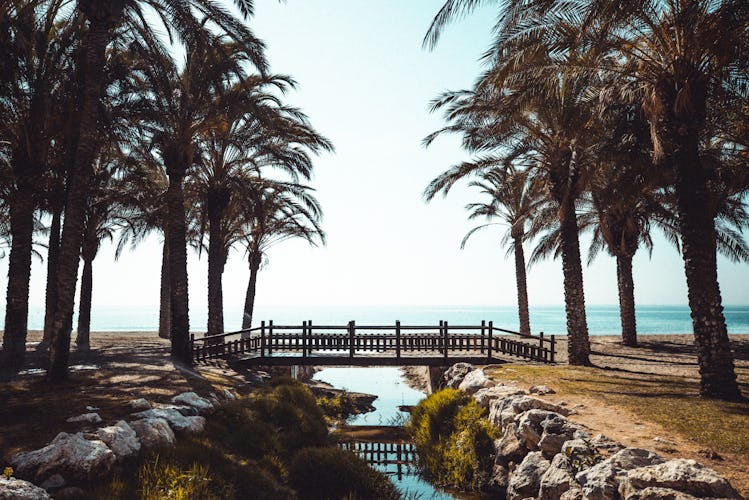
Playa la Herradura
Playa la Herradura, located in Almunecar near Granada, is the perfect beach to try out watersports.
This pebble beach features wrecks of 16th-century Spanish galleons, attracting scuba diving and snorkelling enthusiasts, as well as windsurfers. Sierra Nevada mountains are not far from La Herradura, meaning this is one of those beaches where you can swim after skiing on the same day!
Playa de los Muertos
The beach of Playa de los Muertos, located not far from Almeria, is a stunning straight line of white sand, bordered at either end by large rocks. The beach is very isolated, ideal for those looking for some tranquillity and is the preferred choice of nudists. This purity means there are no amenities and restaurants nearby, so keep in mind to bring your food and water.
Playa de la Rada
One of the most popular beaches on the whole Costa del Sol, Playa de la Rada boasts the Blue Flag award given on several occasions certifying its hygienic and environmental standards. This broad and sandy beach is ideal for spending the whole day soaking up the warm Andalusian sun and enjoying the warm and calm sea.
Playa de Cabopino
This beautiful sandy beach is located in a protected natural zone, near the stunning Artola Dunes. One of the most famous beaches on the Costa del Sol, it is partially reserved for nudists. If you wish to swim in the warm Mediterranean waters and enjoy the feeling of fine sand against your skin, this beach is the perfect destination.
Andalusian weather

As the southernmost region of Spain, Andalusia offers plenty of sunshine and warm weather, with record-breakingly high temperatures during the summer. The majority of the Andalusian territory is covered by two different types of climate: the Mediterranean climate on the coast and the continental climate in the mountainous areas of the interior.
Despite being one of the hottest and driest regions in Europe, western parts of Andalusia are under the influence of the Atlantic ocean and can receive copious amounts of rainfall.
The average temperature in Andalusia throughout the year is over 16 °C. Temperatures can soar past 40 °C in some parts of the region during the summer.
Due to the influx of currents coming from the Atlantic ocean, the sea temperatures in Andalusia are somewhat lower than the rest of Spain.
The sea temperature along the Atlantic coast, known as Costa de la Luz, remains cool even in summer, with temperatures hitting 22 °C at the peak of summer. Moving away from the Atlantic coast towards the Mediterranean, sea temperatures steadily increase. Costa del Sol and the coast around Almeria can have sea temperatures four or five degrees higher than those on the coast of the Atlantic ocean.
Best time to visit
Given that summers in Andalusia can get scorching hot, the best time to visit Andalusia and go sightseeing is in spring or autumn. However, if you are looking to enjoy the charms of the coastal regions, then a summer trip is the only solution!
April, May and October are perfect for exploring the majestic Andalusian cities and plains of the Guadalquivir.
Winter is best reserved for skiing in the Sierra Nevada or hiking in the countryside, where the weather is still fine, even in the middle of summer.
On the other hand, the best time for a beach holiday is the summer, from June to mid-September.
Andalusian culinary specialities
Not surprisingly, Andalusian gastronomy has been deeply influenced by Arabic cuisine. Local dishes are also heavily inspired by the ingredients of the Mediterranean, combining them in a healthy and fun way. Visually appealing, the authentic Andalusian dishes have become one of the calling cards of this region.
Gazpacho Soup
Gazpacho is a cold tomato soup that can be found in every town and village in Andalusia. There are many variations to this recipe, but the original recipe calls only for some onions, tomatoes, peppers, and cucumbers. From there, the recipe was expanded with some adding ingredients like strawberries, melon, or mint. Ideally suited for hot summer days, Gazpacho is always refreshing and gives you plenty of energy.
Espetos
Espetos are skewers of sardines or even prawns arranged to resemble a boat and grilled on a barbecue. This dish is probably the most famous dish in Malaga cuisine and can be found at almost any beach bar and restaurant in Malaga, Nerja, or Marbella.
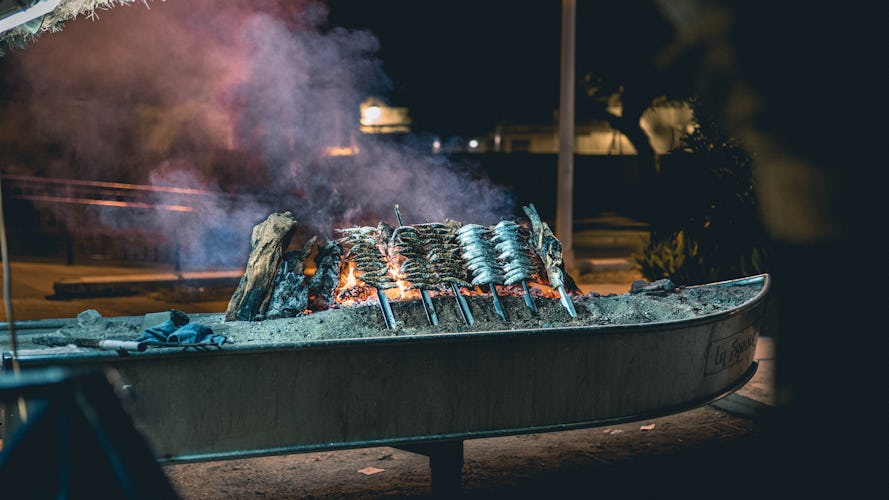
Tortillitas de camarones
This form of tapas symbolizes Cadiz and can be found in all kinds of eateries and bars around the city. These delicious shrimp fritters, crunchy and tasty at the same time, can be enjoyed as a side dish, appetizer, or just as a snack with your beer!
To experience authentic dining while visiting Cadiz, you should head to El Faro de Cádiz restaurant, which offers freshly caught seafood and the most iconic Andalusian recipes.
Caracoles (Snails)
One of the must-try food specialities in Seville that might not be to everyone's liking is Tapas de caracoles - snails.
Preparing snails is a local delicacy that has a long tradition in Spain, several millennia old.
These snail tapas are served in a delicious sauce consisting of garlic, parsley, black pepper, and cumin, perfect for dipping homemade bread.
Keep in mind that this delicacy is served seasonally, so if you're brave enough to try them you'll only be able to have them between May and June.
Pringá
Another typical food from Seville that might not look appealing but is super delicious is the pringa.
The pringa consists of different meats, including cured sausages, roast beef and pork that are slow-cooked for hours until reduced to a liquid spread. Eaten on toast or in sandwiches, almost every home and restaurant in Seville has its recipe.
Suppose you are visiting Seville and wish to try the traditional cuisine. In that case, we recommend visiting Antigua Abaceria de San Lorenzo, a charming restaurant with bags of character using local ingredients and traditional recipes.
Let us help you plan the perfect sailing trip
Provide your travel details, receive free offer and enjoy your holiday!
